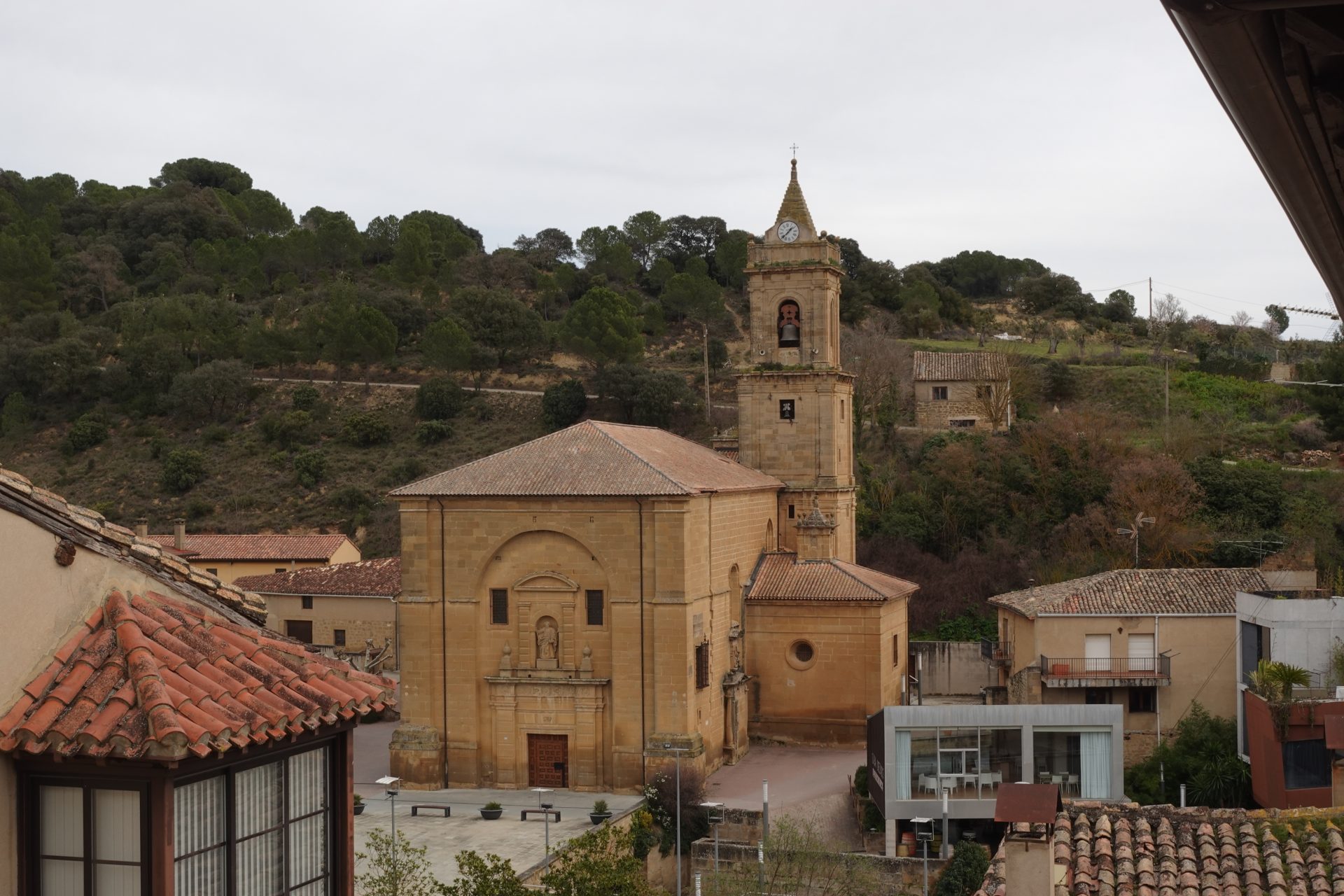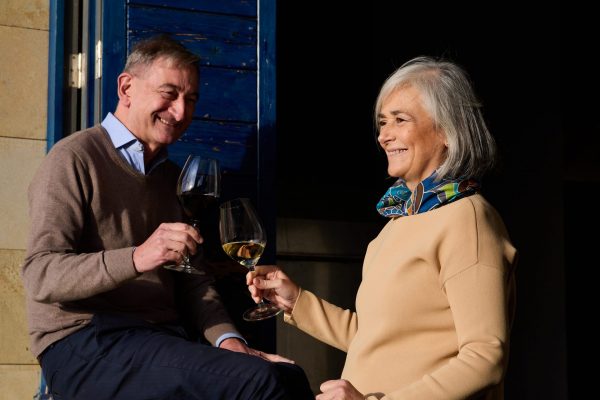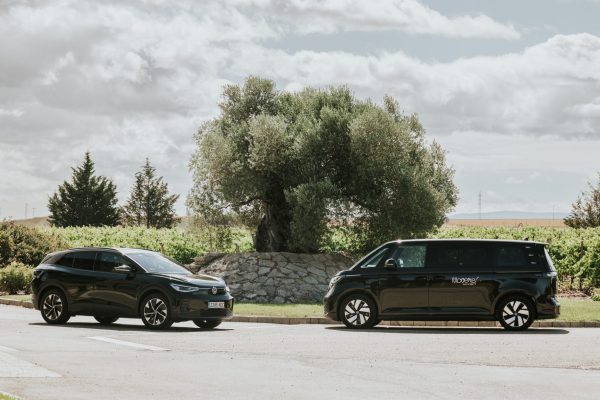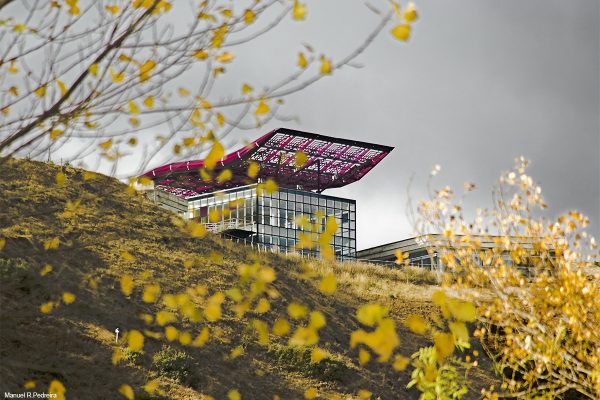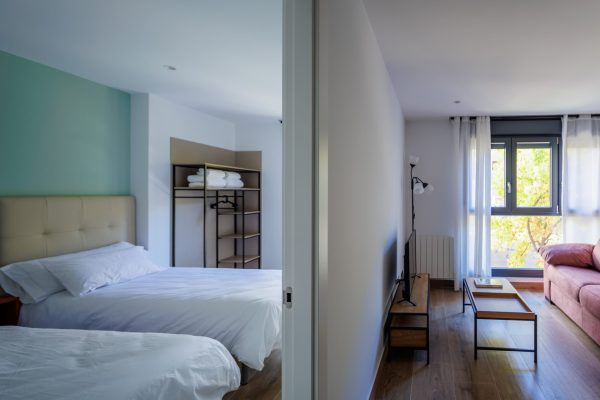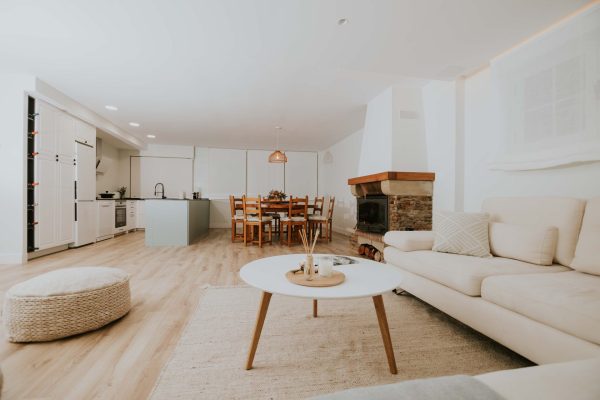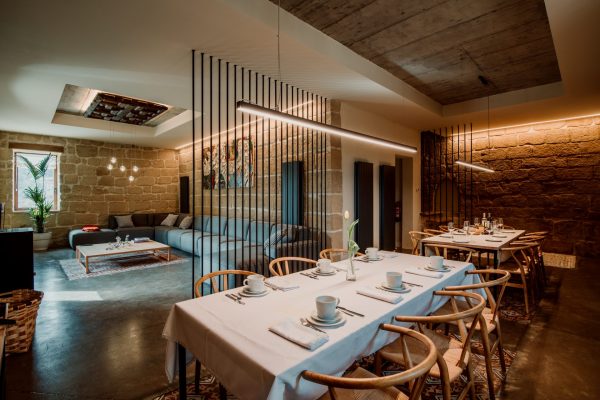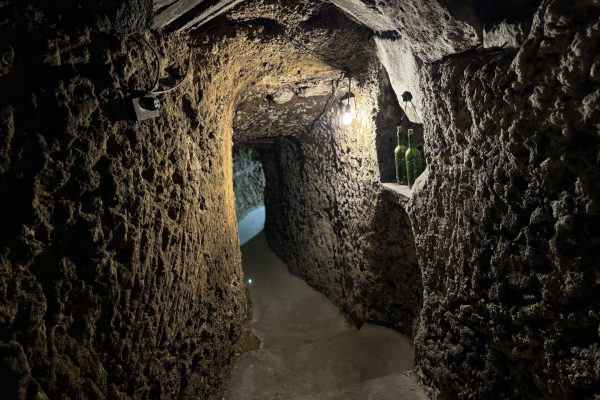We are entering Rioja Alavesa, a small region in the Basque Country that shares a designation of origin with La Rioja. Between the two regions the Ebro River The picturesque silhouettes are sometimes in La Rioja, sometimes in Álava and sometimes acting as a natural barrier between the two territories.
The Rioja Alavesa has earned a great reputation for the beauty of its villages and landscapes, as well as for the production of great wines.
If you decide to visit this region, the following is a recommended route through the 5 most beautiful villages in Rioja Alavesa that you can't miss.
1. Labastida a fortified medieval town

We start the route at Labastida the closest village to Haro in the Rioja Alavesa region one of the most visited towns in La Rioja. Whether you are coming from Vitoria or Haro, Labastida is the ideal place to start this route.
This municipality of 1,400 inhabitants has everything you need to enjoy the heritage, gastronomy and the vineyard landscape.
You can leave your car at the parking which is signposted for a first walking tour of Labastida.
1.1. Church of the Assumption in Labastida
The first thing that strikes us about Labastida is his imposing church of the Assumption which stands at the top of the town and was built between the 16th and 18th centuries. Inside, the main altarpiece and the organ, both from the 17th century, stand out.
1.2. Labastida Town Council
Opposite the church is the City Council of the town, occupying one of the great palaces of Labastida, built in the 18th century and being the nerve centre of the village.
1.3. Santo Cristo Chapel in Labastida
Hermitage of Romanesque style that retains its fortress-like appearance on the top of a watchtower from which there is a wide panoramic view of Labastida and the surrounding area.
1.4. Main Street, Palaces and the Arch of Larrazurria a gateway to the town
To the right of the Town Hall stands another imposing building, the impressive Salazar Palace House, where Don Manuel Quintana lived, an ecclesiastic and wine grower, famous for having imported from Bordeaux (France) the winemaking techniques that later spread throughout La Rioja and the rest of Spain.
It currently houses the facilities of the Casa de Cultura of Labastida and the Tourist Office.
The Larrazuria Arch, in the historic centre of Labastida, formed part of the town's Medieval Wall.
1.5. Ruins of the Convent of San Andrés de Muga
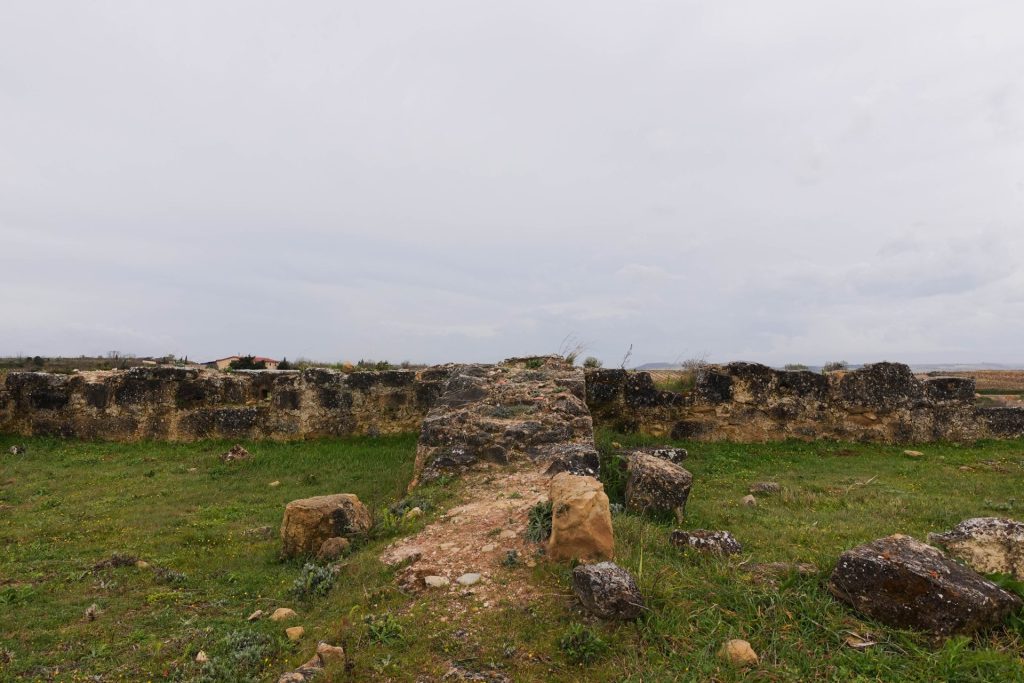
To the south of Labastida, there was a convent of the religious observants of San Francisco, the convent of San Andrés de Muga, because it was founded where there was a hermitage with such a name.
The convent of San Andrés de Muga was one of the most important of the best in the province: The church, like its sacristy, was built with great care and attention to detail. It had a college of arts for religious and lay people.
Today only the ruins of the convent remain which can be seen one kilometre from Labastida on a pleasant stroll.
1.6. Necropolis of Remélluri and Hermitage of Santa Sabina
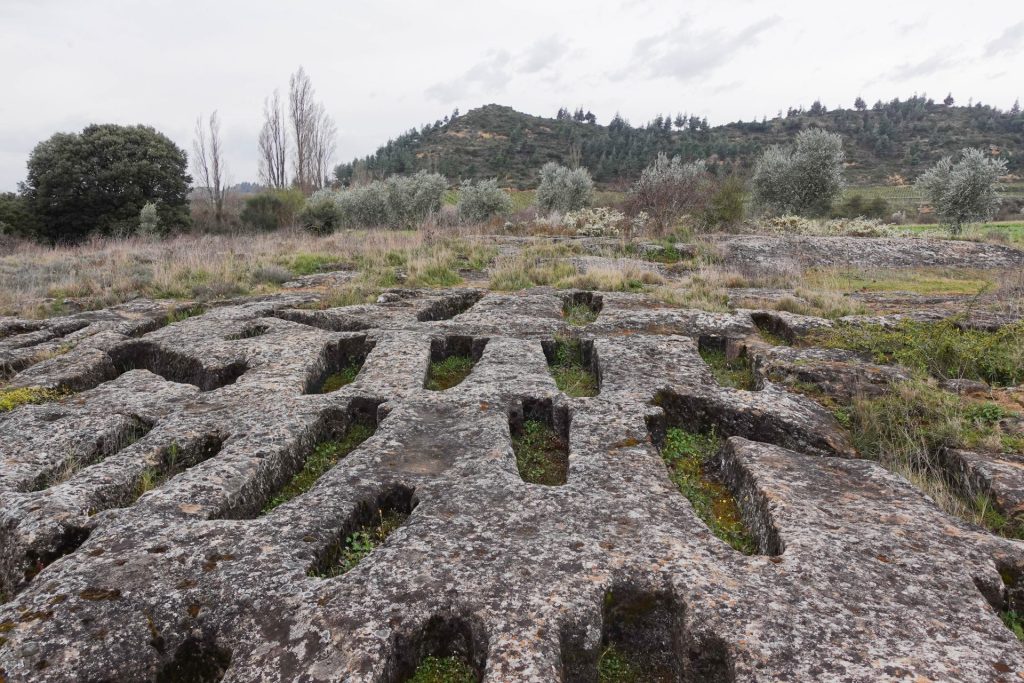
The Granja Nuestra Señora de Remelluri is currently a private farm, however, in the past it belonged to the former estate of the Toloño Monastery.
The toponym Remelluri, corresponds to a settlement founded in the 10th century, which has led to the existence today of a large necropolis with up to 300 anthropomorphic tombs inside this property.
Very close to the necropolis is the hermitage of Santa Sabina It has a simple and austere architecture, and its feast day is celebrated in February.
1.7. San Ginés Park and the Monastery of Santa María de Toloño
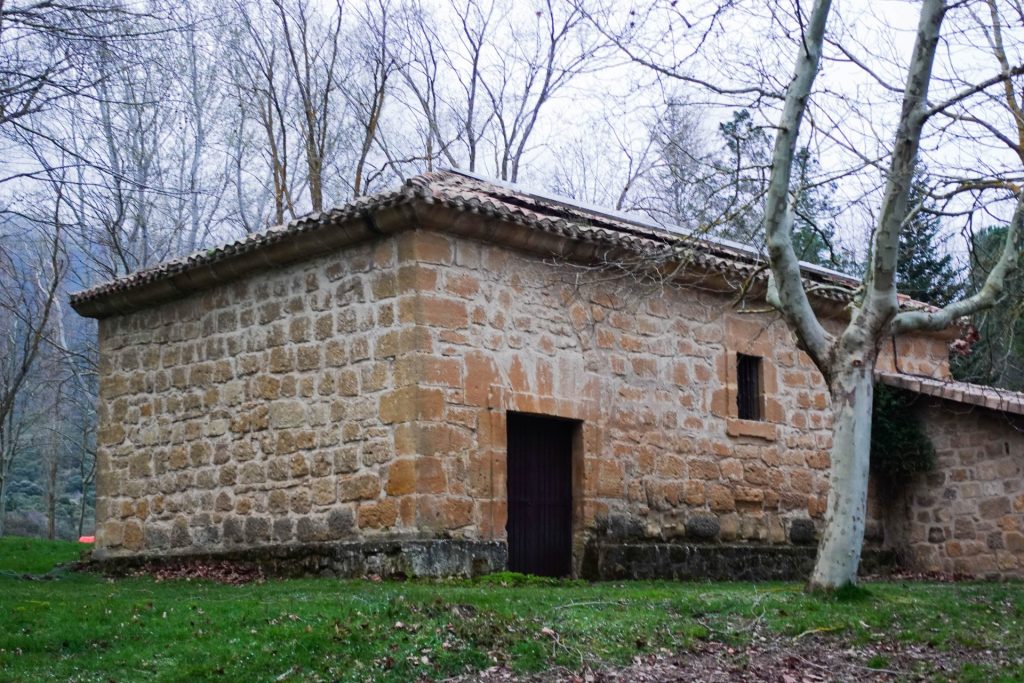
The San Gines Parklocated in the foothills of the Toloño mountain, just 2 kilometres from the centre of Labastida, is a meeting place for those looking to enjoy a day out in nature. It has a parking area, tables, barbecues, bar and children's playground.
The park is created around the hermitage of San Ginés.
1.8. Rioja vineyards and cave wine presses in Labastida
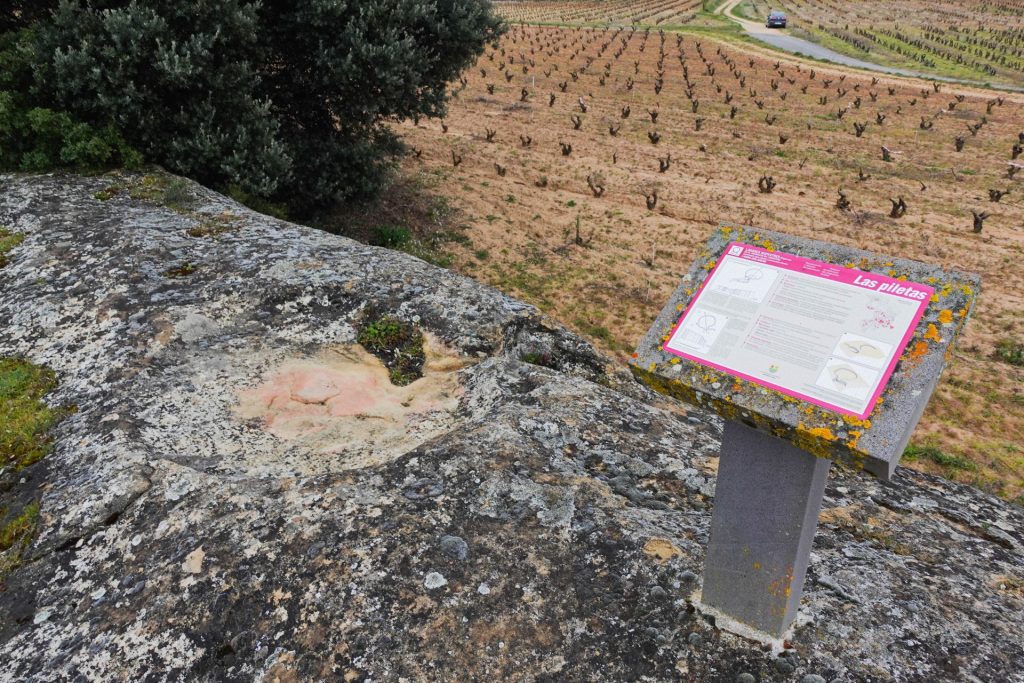
In the surroundings of Labastida you can enjoy the riojan vineyard landscape in all its splendour. A walk that reaches its maximum charm if you discover gems such as the cave wine presses.
Some of the ones you can find in the area around Labastida: Lagar de las Piletas, Lagar de Marrate, Lagar Montebuena Norte and Lagar Montebuena Sur.
It is time to continue the route along the N-232a in the direction of Samaniego.
2. Samaniego and the Balcony of La Rioja
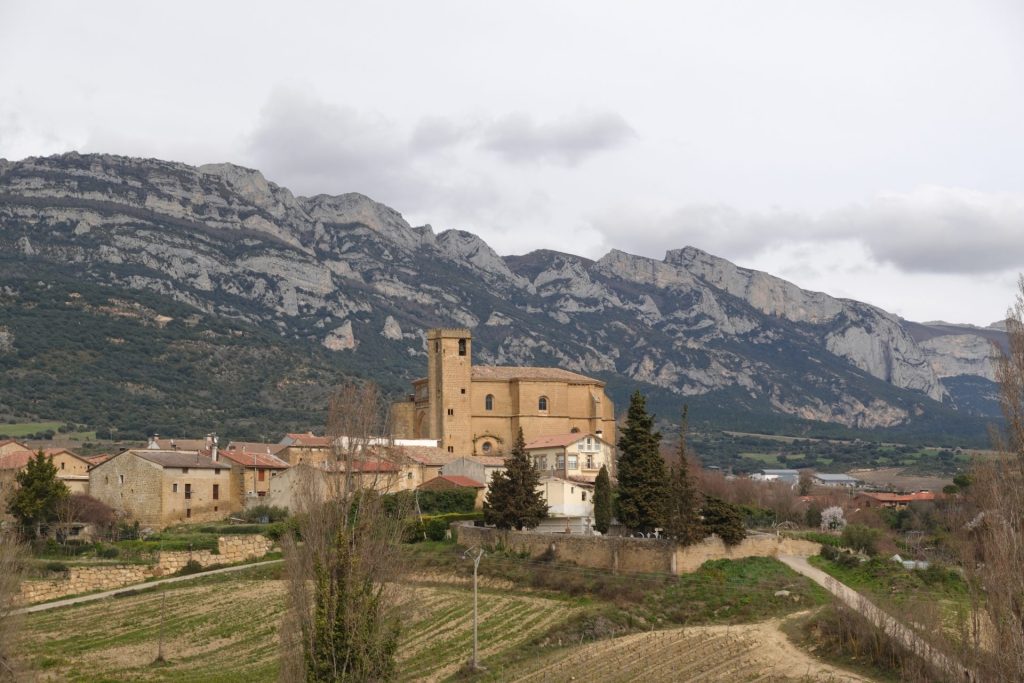
11km from Labastida you will find the village of Samaniego with just 300 inhabitants. With the Sierra Cantabria to the north and the Ebro River to the south, acting as a natural border with La Rioja.
En Samaniego se encuentra Bodegas J.F. Iradier with a visita y cata a su bodega familiar con calado worth a visit.
2.1. Church of Nuestra Señora de la Asunción in Samaniego
The Church of Our Lady of the Assumption was built in the second half of the 16th century next to a old fortification, attached to the only remaining tower.
The main altarpiece of churrigueresque style and scenography. It consists of large Solomonic columns vine climbs, garlands and a rich decoration of plant motifs.
2.2. Hermitage of La Virgen del Valle
Built at the end of the 17th century on the outskirts of the village with a very simple rectangular floor plan.
Inside it has three altarpieces, two of them from the Decadent Baroque period, as well as a representation of the Virgin of the Valley early 17th century.
2.3. Ermita del Cristo Hermitage and Picnic Area
The Ermita del Cristo Hermitage is located in the foothills of the Sierra Cantabria, about 2km from Samaniego, built in the XVIIIth century after demolishing a church of the same name located at the top of the mountain.
It is a simple temple inside which The altarpiece and its attic relief depicting the Pietà stand out, from the end of the 16th or beginning of the 17th century. It suffered a fire in 1978 and was rebuilt in 1993.
Inside it houses a shelter with space for 12 people.
2.4. The Balcony of La Rioja in Rioja Alavesa
Before visiting the village of Samaniego, you must go up to El Balcón de la Rioja, one of the most emblematic points of Rioja Alavesa, located at 1000 metres above sea level on the top of Herrera, it offers a breathtaking view. panoramic view of the whole of Rioja Alavesa and part of La Rioja.
Around the lookout point there is a picnic area with tables and benches where you can enjoy the scenery and a good picnic.
Now you must retrace your steps back to Samaniego to take the provincial road A-3214 that leads you to Villabuena de Álava.
Villabuena de Álava and its imposing church of San Andrés.
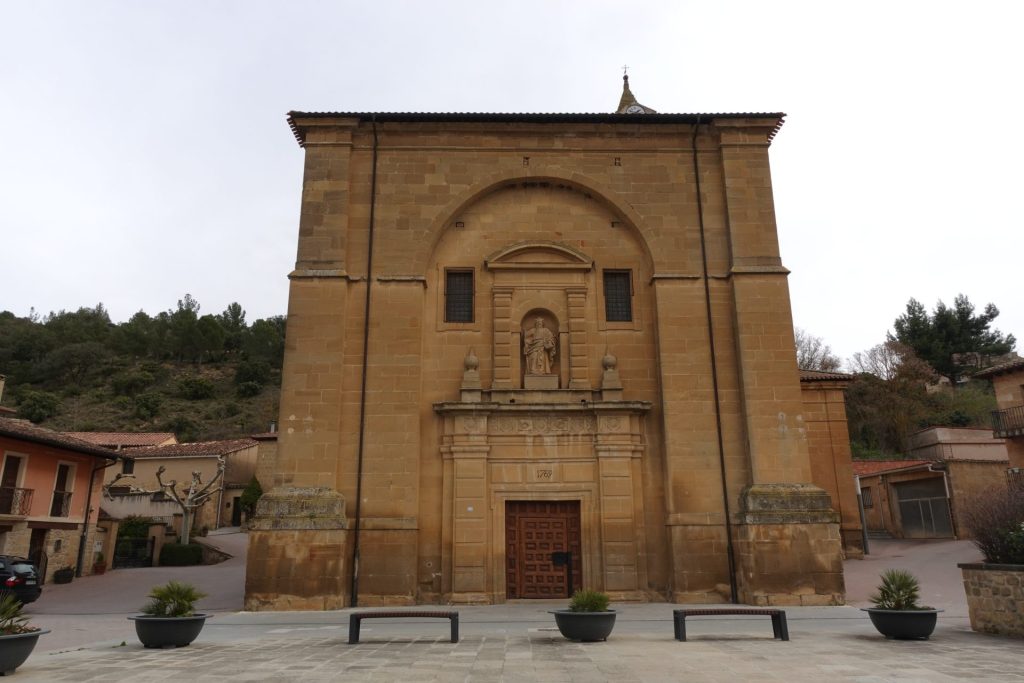
3.5km from Samaniego is Villabuena de Álava, a small town of 290 inhabitants that has earned its place among the most popular 5 most beautiful villages in Rioja Alavesa for the particularity of its streets and the combination of traditional and modern architecture.
3.1. St Andrew's Church
The village's parish church is dedicated to the patron saint of the village, San Andrés. Its construction shares several styles, ranging from from late gothic to baroque.
It is made of ashlar stone and has two doorways. In the interior, the main altarpiece is in the style of the Renaissance and expresses great austerity and balance.
In the Cruise there are two others baroque altarpieces with Solomonic columns and Corinthian capitals dedicated to St. Peter and St. John.
The choir has baroque organ built in 1735 and recently restored.
3.2. San Torcuato Chapel
The hermitage of San Torcuato to the north of the locality is rectangular in shape with masonry walls.
The interior has a space in the chancel, in the form of a sacristy, where the old door of the hermitage is kept. The altarpiece houses the image of Saint Anthony Abbot. and to its right, free of the altarpiece, the image of San Torcuato in episcopal robes and insignia.
3.3. Santa Maria Hermitage
Restored in 1959, although It was originally Romanesque in transition to Gothic. The church still has a window, a small corbel that supported the holy water basin, a stone frieze under the pedestal of the Virgin and her image, as well as the access door with a pointed arch. There is a 14th century "Andra Mari": Santa María de Villabuena.
3.4. Casa del Indiano in Villabuena
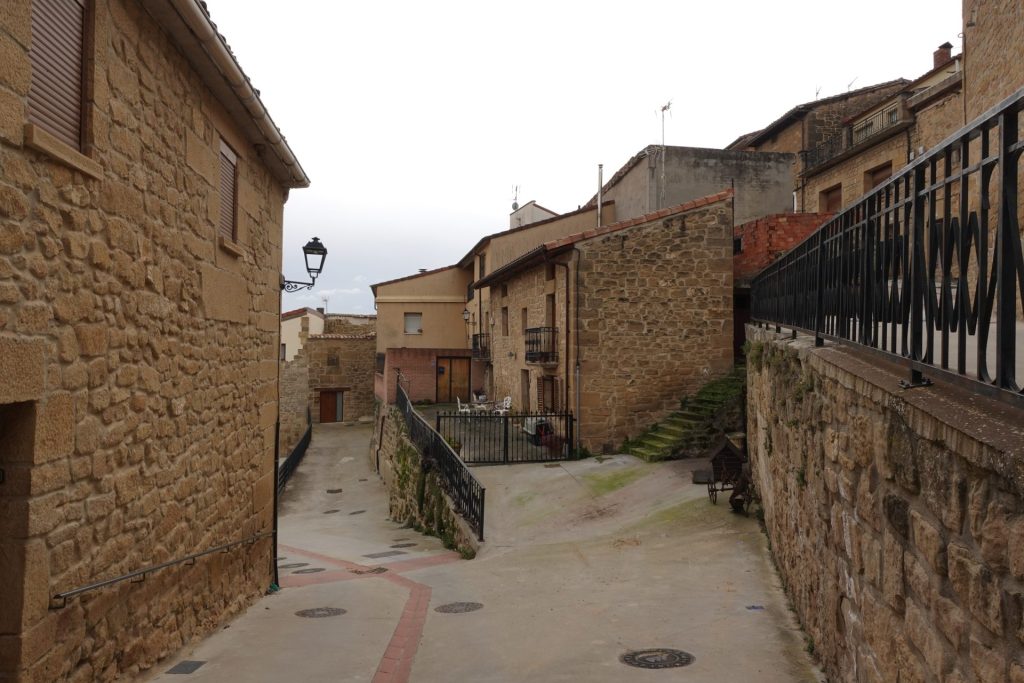
The Peciña Samaniego Palace is known as "La casa del Indiano" (The Indian's house). A work by Andrés de BençaIt was built between 1608 and 1610, by order of Pedro Peciña Samaniego, archdeacon and canon of Santiago de Compostela. It became the home of some important Carlist figures from the locality.as Francisco de Paula Rivas.
It is a building consisting of two parts: a ground floor and a first floor on a rectangular plot of land, added by a taller tower than the rest, which has the richest constructive elements.
On the inside, a small light gives brightness to the magnificent and spacious staircase. Its balustrade, with its well-turned balusters, stone steps in the first sections and ceramic tiling in the rest, captivate the observer.
3.4. Domen "El Montecillo".
The dolmen of Montecillo is located at between two vineyards. It has similar characteristics to the other seven in the Rioja Alavesa. It is deformed and half-covered by a recently formed morcuero. The entrance to the corridor is hidden by a wall that separates the two estates.
The dolmen complex rests directly on top of the sandstone strata, common throughout the Rioja Alavesa.
4. Elciego, a town with a lot of charm in its historic quarter.
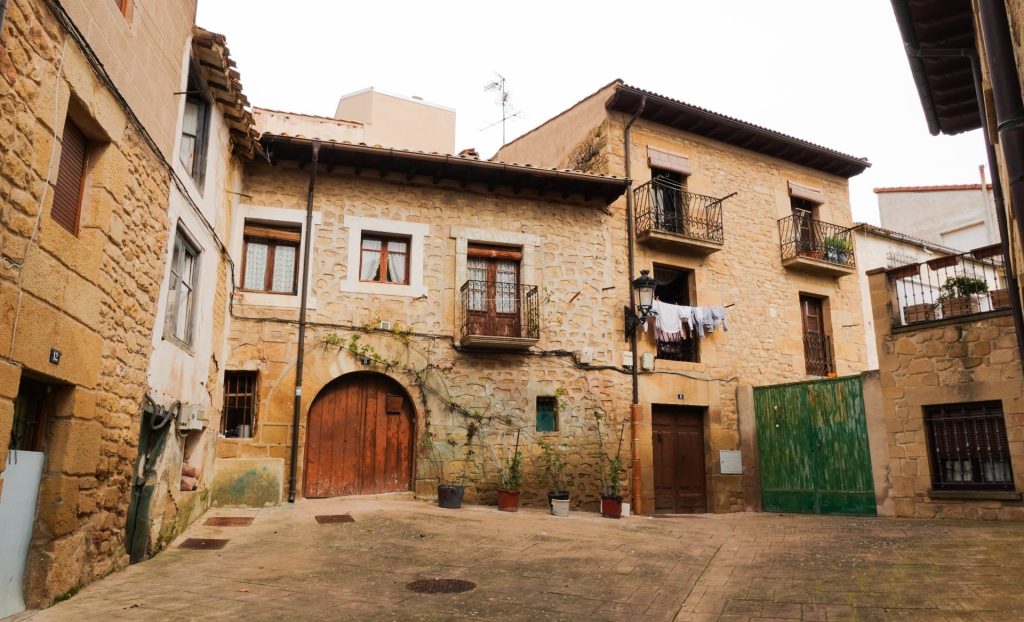
6.5km from Villabuena de Álava, following the A-3214, we reach another of the most beautiful villages in the Rioja Alavesa, Elciego, with 950 inhabitants. This village with its curious name will captivate you with its corners and its artistic heritage.
4.1. Elciego Town Council
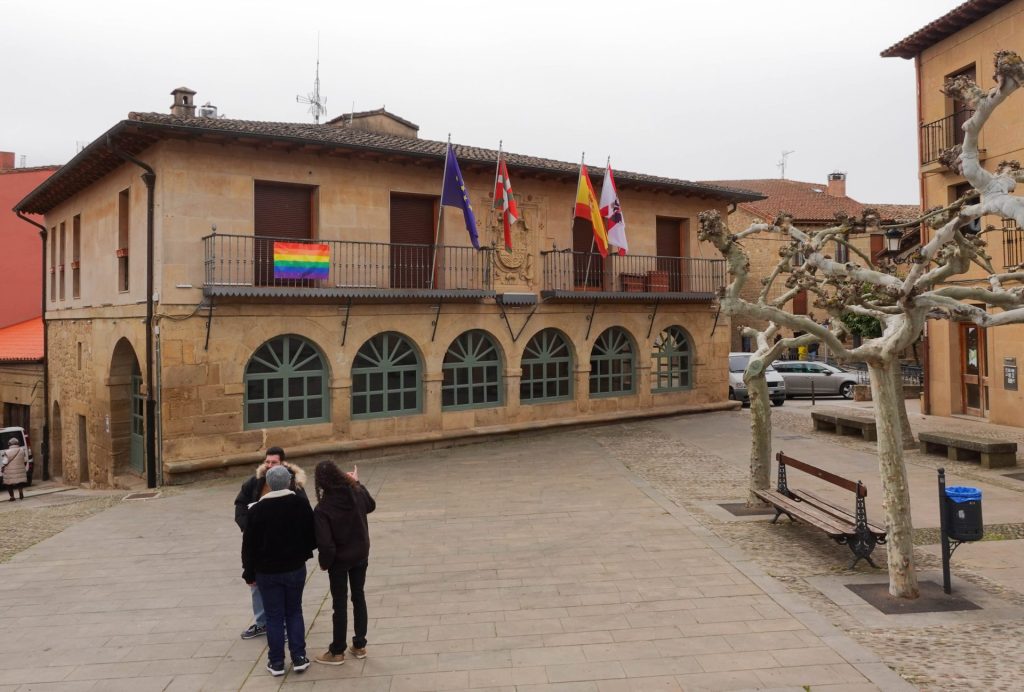
Built with the typical architecture of Basque administrative buildings 18th century has a porticoed first floor whose arcade, open to the square, consists of six continuous semicircular openings with imposts, while on the The first floor houses the following rooms which open out onto the square with two large balconies, including the Imperial Coat of Arms of Philip II.
On the sides of the building there are two access doors to the porticoed area centuries old.
4.2. Plaza Mayor and Virgen de la Plaza Hermitage
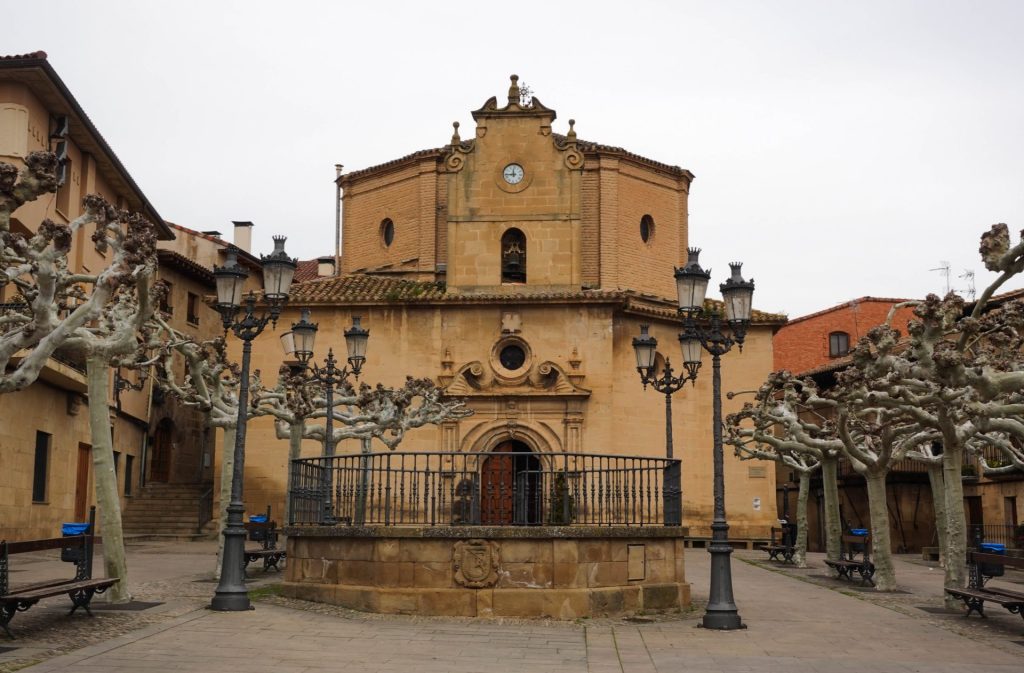
In the Plaza Mayor, in front of the Town Hall, you will find The Hermitage of the Virgen de la Plaza. A century building XVIII which stands on the site of an earlier construction of which only a beautiful 14th century carving of the Virgen de la Plaza remains.
Inside you can see three altarpieces in the decadent baroque style, the side ones dedicated to San Antonio and San José and the central one in honour of the Virgen de la Plaza, who has a great devotion in Elciego.
4.3. Church of San Andrés in Elciego
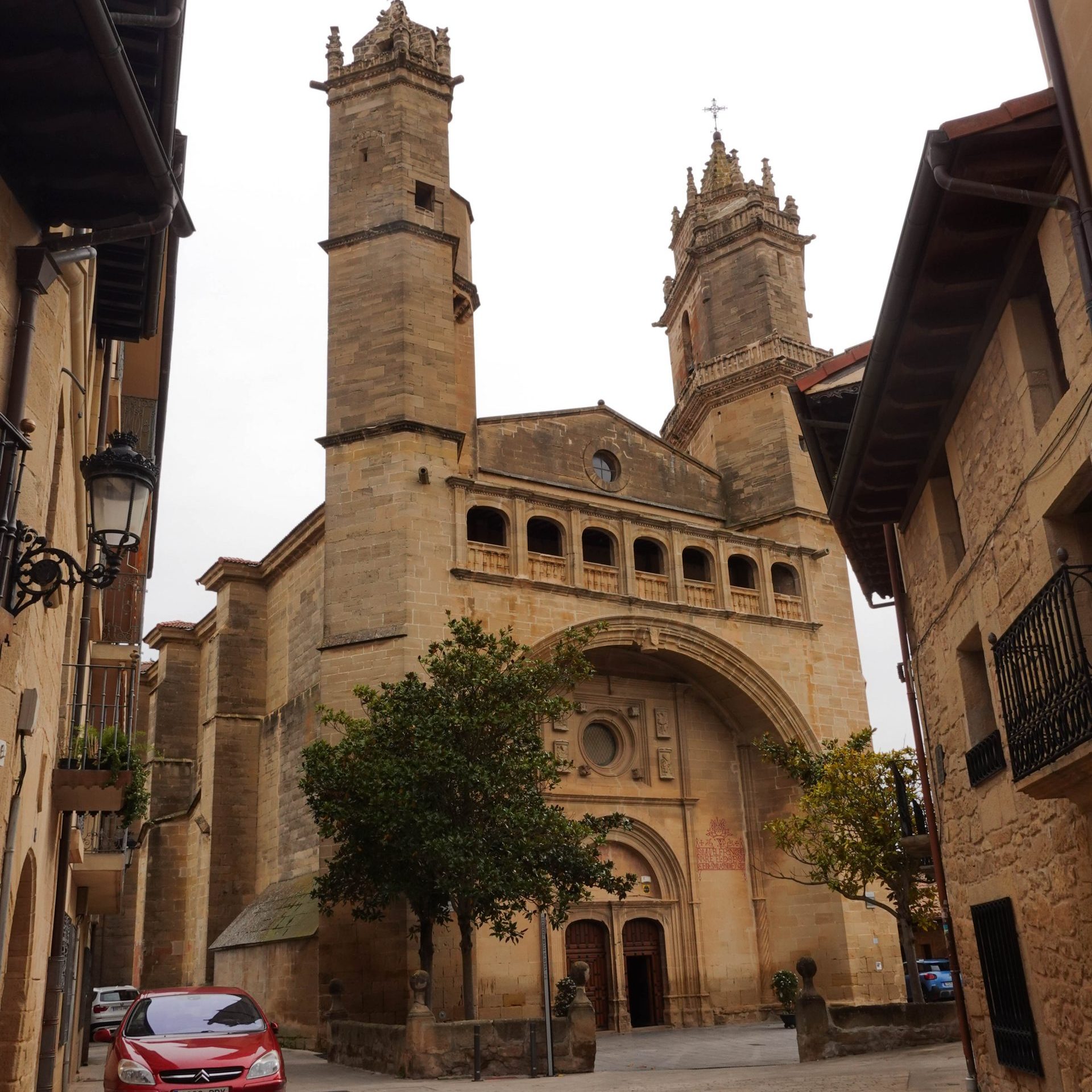
Once again we are faced with St Andrew in the spotlight of the parish church. In the case of Elciego, the church is located far away from the town's main square and to level it, it was necessary to build a large platform which is impressive from the viewpoint of the river.
The building, constructed in ashlar stone in the 16th century, in a variety of architectural styles.
The towers are located at both sides of the front cover and are characterised by their irregular pentagonal plan and by being linked by a large arch crowned by a "loggia" of seven segmental arches.
Inside, the High Altarpiece is from the early Baroque period. and retains Renaissance influences as can be seen throughout the work, the painting is somewhat later from the beginning of the 18th century. 18TH CENTURY.
The choir is in the Plateresque style and is located above a segmental arch. Its iconography includes medallions of busts of classical figures and some saints.
The organ It was built at the beginning of the 18th century in the classical style and, although it is missing pipes, it is still in operation.
4.4. Hermitage of San Roque and its viewing point
Next to the hermitage of San Roque, of simple construction, we find a viewpoint from which to appreciate the village of Elciego, as well as its surroundings.
4.5. Hermitage of San Vicente
The hermitage of San Vicente is located on the hill of the same name to the south of Elciego. According to popular tradition, the original population centre was located in the vicinity of this hermitage.
The chapel is a building simple and austere It was built in the 12th century and improved on several occasions.
In the vicinity of the hermitage a Mediterranean garden designed in honour of the botanist Xavier de Arízaga a native of Elciego, who for many years was the town's apothecary and pharmacist.
5. Laguardia one of the most beautiful villages in Spain
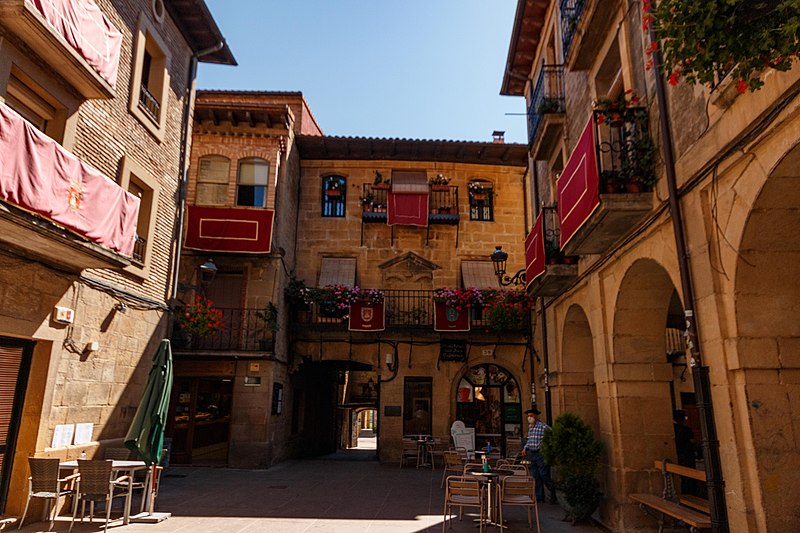
6.6km from Elciego on the A-3210, Laguardia surprises us with its transparent lift that tells us about the unevenness of the medieval villages and of the tourist potential of this village of 1500 inhabitants, considered one of the most important most beautiful in Spain and the most visited in Rioja Alavesa.
5.1. Church of Santa María de los Reyes in Laguardia
The imposing Church of Santa María de los Reyes Construction began in the 12th century and the church as we know it today was built in the 14th century, with the exception of the main section of the naves and the chancel, which date from the 16th century.
Inside the church, the most outstanding piece of the church is the portico, which was carved at the end of the 14th century and polychromed in the 17th century, It is one of the few remaining polychrome porticoes in Spain.
5.2. Church of San Juan in Laguardia
The church of San Juan began to be built in Romanesque style and was finished in Gothic style.. It has a chapel attached at the foot, from the 18th century, consecrated to the Virgen del Pilar.
5.3. The Laguardia Wall, a fortified village
Laguardia was fortified in the 13th century by order of the Navarrese King Sancho VII El Fuerte. This wall, of which only a few remains are left, had four access doors and a fifth which opened in the 15th century.
The wall was about two metres wide and was crowned by a crenellated walkway. In the various wars of the 19th century, the walls were badly damaged and were rebuilt on their original layout. Two of its towers remain transformed into bell towers.
5.4. The arcaded Plaza Mayor and the town centre
In the arcaded Plaza Mayor you will find the old town hall and new town hall of Laguardia. The latter, built in the 19th century, has the coat of arms of the town on its façade and a clock with automatons that dance at 12, 14, 17 and 20 o'clock to the rhythm of a parade typical of the town's festivals.
The Old Town Hall The main façade of the Renaissance style building has an imperial coat of arms of Charles V.
5.5. Birthplace of Félix María Samaniego a pseventeenth century
This baroque emblazoned house from the 17th century is located in a narrow alleyway and was the birthplace of Félix María Samaniego, a famous fable writer, and now houses the offices of the Diputación Foral.
In Laguardia they also wanted to count on a Monument to Félix María Samaniego The building of a kiosk from the end of the 19th century in oriental style is a unique piece of Iron Architecture in the Basque Country. In the centre is a bust of the fabulist.
5.6. Dolmen of San Martín in Laguardia
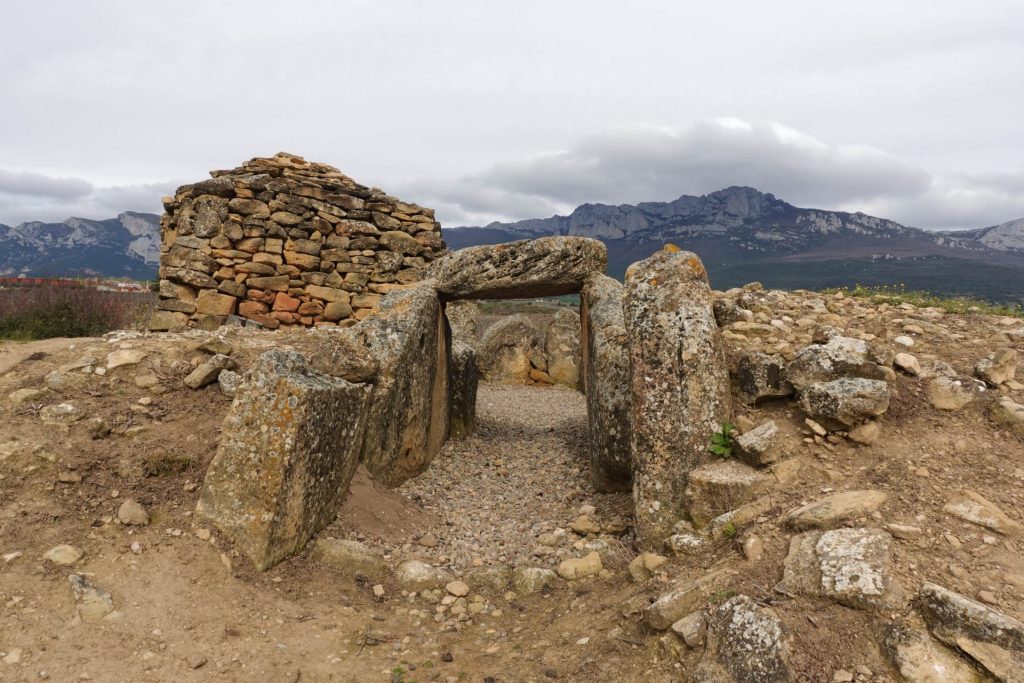
Within the municipal territory of Laguardia lies part of the Los Dolmenes Monumental Complex of the lowlands of the Territorio Histórico de Álava.
It is about megalithic structures with funerary functions. In the dolmen chamber, the corpses were deposited on the surface of the enclosure, accompanied by their respective grave goods.
Just 1.4km from the town centre, following the N-232a in the direction of Leza, you will come across the Dolmen of San Martín together with a vineyard guardThe cave building is typical of the area.
5.7. Celtiberian stanza at La Barbacana
Celtiberian pond of the Barbican is an artificial pond dating back to the Iron Age with the capacity to collect some 300,000 litres of water, It is the largest infrastructure of this type and from this period found in Europe. It is located on the southern part of the hill on which the town stands and collects water from a nearby spring.
It was discovered during an archaeological intervention on the site in 1998.
5.8. Romanesque Hermitage of Santa María de Berberana
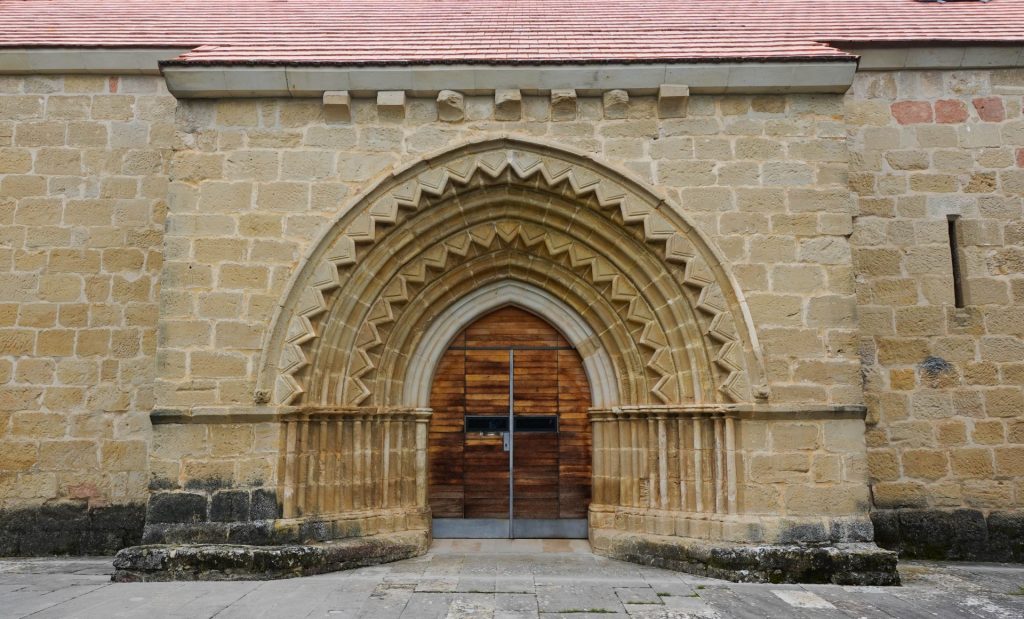
The Berberana hermitage has a long history behind it with a pilgrimage which goes from being multitudinous, with all the villages of the region, to being lost, only to return again with more strength. Just like the history of the carving of the Virgin who is lost track of when the village of Berberana becomes uninhabited and returns to her church decades later.
In addition, it is the only Romanesque church in the whole of the Rioja Alavesa that has a square apse.
In the area surrounding the chapel there is a park with picnic area and fountain. It is 5km from Laguardia.
5.9. Celtiberian settlement at La Hoya
The Celtiberian settlement of La Hoya is an important protohistoric pre-Roman archaeological site covering an extensive period of over a thousand years, from the Bronze Age, 12th century BC, to the end of the Iron Age, in the 2nd century BC.
It was discovered in 1935 and has been the subject of many excavation programmes, believed to be 15% of its extent. It is attached to a interpretation centre which explains the characteristics of the village and its people, as well as the architecture of the houses and the funerary traditions.
Here we put an end to this route through the 5 most beautiful villages of Rioja Alavesa, if you like beautiful villages we recommend you to continue exploring these ones. 5 charming villages in the region of Haro and these 5 villages less than 20 minutes from Logroño.


